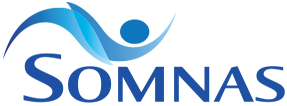Hate Your CPAP Mask : 4 New Treatment Options for Obstructive Sleep Apnea

Table of Contents
“I hate that mask!” That’s a typical reaction for 40-50 percent of obstructive sleep apnea (OSA) patients who have unsuccessfully tried the gold standard treatment for the sleep disorder — continuous positive airway pressure (CPAP). “Fortunately, there are several other alternatives to CPAP available for untreated sleep apnea if you do not want to or can not use CPAP or similar machines that your doctor most commonly recommended”
Dr. Ahmad said Tweet
1. Lifestyle Modification including Undergoing Weight Management Program
a Weight loss can help improve or eliminate your patient’s MILD sleep apnea symptoms if they are overweight. Overweight people often have thick necks with extra tissue in the throat that may block the airway.
b Bariatric surgery is an option for obese patients who are unable to lose weight through traditional approaches. However, bariatric surgery, like all surgeries, has a risk for complications, is associated with post-operative pain, and is not guaranteed to yield weight loss.
c Lifestyle Modification measures such as quitting smoking, exercising regularly, and avoiding alcohol and sedatives can help with MILD sleep apnea. Regular exercise can decrease your sleep apnea episodes and improve your alertness and energy during the day.
d Myofunctional therapy could serve as an adjunct to other obstructive sleep apnea treatments. Current literature demonstrates that myofunctional therapy decreases apnea-hypopnea index by approximately 50% in adults and 62% in children. Lowest oxygen saturations, snoring, and sleepiness outcomes improve in adults. A qualified speech therapist can guide you for such therapy, as illustrated by this ARTICLE or VIDEO link.
2. Wear An Oral or Dental Appliance for Sleep Apnea

a Oral appliances, fit by qualified dentists, are an alternative treatment for many patients with MILD to MODERATE sleep apnea. They come in many different designs, but for the most part, they are usually custom made. The main purpose of the dental device is to keep the airway open during sleep, thereby preventing it from collapsing and blocking the normal flow of air during breathing. The two most general categories of dental devices can be broken down into mandibular (lower jaw) advancing device and tongue retaining devices.
3. Sleep Apnea Surgery
a Hypopharyngeal Procedures include tongue radiofrequency, genioglossus advancement, hyoid suspension, and partial glossectomy. They can be performed alone or in combination with soft palate procedures.
b Jaw Advancement Surgery also known as maxillomandibular advancement is another CPAP alternative which moves the jaw forward to facilitate breathing. This surgery is usually performed by qualified maxillo-facial surgeons.
a Inspire is a FDA approved hypoglossal nerve stimulator device that involves stimulation of the nerve that controls tongue movement. Inspire, a pacemaker like device, is placed just below your collar bone during a surgical procedure. When the system is turned on during sleep, stimulation of the hypoglossal nerve moves the tongue forward to open the space for breathing in the throat.
b This Hypoglossal nerve stimulation is a good option for adults who have tried other methods, including CPAP specifically, without success in the past and

- Have a body mass index (BMI) of less than 32 (although Medicare sets the threshold at 35)
- Have moderate to severe obstructive sleep apnea (Apnea-Hypopnea Index between 15 and 65)
- Are unable to use or get consistent benefit from CPAP
- If you are over age 22
c There are some exceptions to these general criteria, and hypoglossal nerve stimulation is not for everyone. People who are candidates for this new sleep apnea device will undergo a sedated endoscopic exam, during which a flexible camera is passed through the nostril to the throat to examine how the throat closes during sleep. The results determine whether you will benefit from hypoglossal nerve stimulation. At this point, the device is covered by Medicare and most commercial insurance policies in Florida.
Treatment is personal
Before you can decide on a treatment, you first need to identify that you even have sleep apnea. Because the breathing pauses happen during sleep, most people with apnea have no idea they’ve got it. Important clues are nighttime snoring and daytime sleepiness. It’s important to get an objective measure like a sleep study, because the treatment you select will depend on how severe the sleep apnea is. “Left untreated, OSA can negatively impact the quality of sleep or cause significant medical problems including death. The best treatment option is the one that you’re comfortable to use on a nightly basis for the long term.” noted Dr. Ahmad.

Dr. Imtiaz Ahmad of SOMNAS Sleep specializes in the diagnosis and treatment of sleep disorders, including sleep apnea. He is board-certified in Sleep Medicine and works with a multidisciplinary group of physicians including ENT surgeons, Dentists and Maxillo-Facial Surgeons to find the best solution for your sleep apnea and snoring problem.
Imtiaz Ahmad, MD, MPH, FCCP
Dr. Imtiaz Ahmad is a highly qualified physician, Board Certified in Pulmonary and Sleep Medicine. He has received advanced training from some of the most prestigious institutions, including Harvard University, Cornell University, State University of New York at Brooklyn, and the University of Mississippi. SOMNAS is a medical facility that is committed to improving and maintaining the health of patients with sleep disorders. The expert team at SOMNAS is known for their compassionate and high-quality care. They offer unparalleled treatment and care to patients on the Gulf Coast of Florida, ensuring a better and healthier life for them.
Job Title: Board Certified in Pulmonary Medicine

